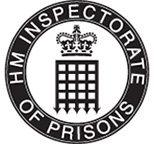West Yorkshire PEEL 2018
Legitimacy
How legitimately does the force treat the public and its workforce?
To what extent does the force treat all of the people it serves with fairness and respect?
This question was not subject to detailed inspection in 2018/19, and our judgment from the 2017 legitimacy inspection has been carried over.However, we reviewed a representative sample of 249 stop and search records to assess the reasonableness of the recorded grounds. We found that 92 percent of those records contained reasonable grounds. Our assessment is based on the grounds recorded by the searching officer and not the grounds that existed at the time of the search.
In our 2017 legitimacy report, we recommended that all forces should:
- monitor and analyse comprehensive stop and search data to understand reasons for disparities;
- take action on those; and
- publish the analysis and the action by July 2018.
We found that the force has complied with some of this recommendation. But it doesn’t monitor find rates (the rate at which officers find what they were searching for) or identify the extent to which find rates differ between people from different ethnicities and across different types of searches (including separate identification of find rates for drug possession and supply-type offences). Additionally, it isn’t clear that it monitors enough data to identify the prevalence of possession-only drug searches or the extent to which these align with local or force-level priorities.
We reviewed the force’s website and found no obvious mention of analysis it had carried out to understand and explain reasons for disparities or any subsequent
action taken.
How well does the force ensure that its workforce behaves ethically and lawfully?
Areas for improvement
- The force should ensure that its internal ethics committee becomes more relevant to the workforce and that its findings are better communicated.
- The force should ensure that it can fully monitor all of its computer systems, including mobile data, to proactively identify data breaches, protect the force’s data and identify computer misuse.
- The force should ensure that it raises confidence among its workforce in the anonymity of its confidential reporting facilities for staff to report wrongdoing.
Cause of concern
West Yorkshire Police is failing to place enough resources into tackling potential corruption within its workforce. This is a cause of concern.
Recommendations
- The force should ensure that it has enough capability and capacity to counter corruption effectively and proactively.
We set out our detailed findings below. These are the basis for our judgment of the force’s performance in this area.
Maintaining an ethical culture
The Code of Ethics and ethical decision making are embedded throughout the organisation. West Yorkshire Police has accessible policies and robust procedures that comply with the force’s equality duty and reflect the Code of Ethics.
One of the force’s chief superintendents is the regional lead on ethics. This has raised the profile of ethics in West Yorkshire Police and provided opportunities to identify best practice from other forces on how to raise workforce awareness of ethical behaviour.
The temporary chief constable (at the time of the inspection) has appeared in a promotional video outlining how the force approaches ethics, designed to show that ethics are important to senior leaders. He talks about the criticality of an ethical approach in the use of police powers. The video goes on to explain the remit of the force ethics committee. It clarifies the difference between unfair and unethical practices.
The workforce has received adequate Code of Ethics training, which includes the concept of policing by consent and balancing decision making with fairness. Staff can readily explain how they apply ethics within their working practices and decision making. For example, the application of the NDM.
The force recently reintroduced its internal ethics committee after ten months without one. The committee is chaired by an (external) academic with a remit to discuss ethical dilemmas put forward by the workforce, thereby providing guidance and clarity on their questions. The committee is not yet embedded in the consciousness of the workforce.
There appear to be long delays in discussing referred questions and no formal means for communicating findings to the wider workforce. Consequently, staff appear to be unclear on what constitutes an ethical dilemma and is suitable for the committee’s attention. The force needs to raise the profile of its internal ethics committee and clarify its role.
However, the force has produced six short videos to date – known as ‘sixty second briefings’ – on specific ethical issues or standards of behaviour. These are shown to staff at team meetings. They give supervisors an opportunity to discuss ethical questions the briefings raise with their teams. We found that staff regularly watch these briefings and refer to them for guidance.
West Yorkshire Police fosters a ‘no blame’ culture where staff are encouraged to learn from mistakes in an open and clear manner. The basis of this culture is identifying what went wrong and taking steps to ensure mistakes are not repeated. Staff associations such as Unison and the Police Federation gave us a positive view on how the organisation deals with honest mistakes, in terms of the individual concerned and the wider workforce.
The force complies with the national vetting code of standards set by the College of Policing. The results of its vetting decisions are monitored to identify any disparities within groups. Additionally, the force invites external scrutiny of its vetting practices by an independent panel.
The force has met our 2016 recommendation regarding up-to-date vetting of the workforce. At the time of the inspection there were only 45 outstanding vetting issues that required progressing in a force of 9,211 officers and staff.
The force, which includes high-risk posts and contractors, has enough resources to carry out its vetting functions. We found that vetting renewals for staff are managed through the vetting management system, which appears comprehensive. In addition, all internal applications, transfers and promotions are subject to vetting unit checks.
West Yorkshire Police uses a variety of practices to clarify and reinforce standards of behaviour to staff. New recruits, supervisors and staff identified as being in high-risk roles receive extensive training on professional standards. Experienced staff benefit from refresher courses, which are designed to maintain a consistent level of knowledge on integrity and ethics through all levels of the organisation.
The professional standards policy is easy to understand and can be found on the force intranet site. We found that staff understand the force’s integrity policies and their obligations – for example, the duty to report business interests, gifts and hospitality.
The force publishes misconduct outcomes on its intranet site and a quarterly professional standards electronic newsletter. Both provide details of behaviour that has resulted in a misconduct finding so that staff clearly understand the nature of conduct that breaches acceptable professional standards. We saw that the intranet site and newsletters had high viewing figures, demonstrating their value as a communication tool to identify unacceptable behaviour and understand its consequences.
Tackling corruption
West Yorkshire Police has a local, strategic, counter corruption threat assessment and a control strategy that were written in autumn 2018. (The threat assessment is linked to a control strategy called the corruption strategy.)
The force has identified its four main threats of corruption as:
- inappropriate associations;
- unlawful disclosure of information;
- theft and fraud; and
- the abuse of authority for a sexual purpose.
This corruption strategy forms the basis of a plan to combat potential corruption, with some threats, actions and accountability identified. However, the strategic assessment does not consider potential corruptors or provide a profile of characteristics that place officers and staff at risk from corruption. More detail on how the force has selected its priorities, along with an explanation of how it will manage the risks identified, would improve the assessment.
The force does not have a strategic-level people intelligence meeting to manage the internal risk of corruption. However, the professional standards department holds quarterly meetings with district and departmental commanders where they discuss officers of concern. Such officers are identified with a risk score from criteria including notifiable associations, sickness, business interests and complaints. Any risk is managed by local commanders and supervisors, based on their knowledge of the individuals concerned and ability to monitor their daily activity.
The force does not have sufficient capacity and capability in its counter-corruption unit to carry out effective intelligence gathering and investigate potential corruption. The unit is considerably understaffed in comparison to counter-corruption units in similar sized, metropolitan forces. Additionally, the unit lacks the required level of expertise in some areas of accepted counter corruption tactics. It is therefore unable to routinely seek intelligence about corrupt practices using covert tactics. This lack of capacity and capability poses a significant risk to the force.
The force purchased software in mid-2018 to enable it to monitor the usage of its IT systems. However, for several legal and technical reasons, the software was not introduced until May 2019.
We found that the force has done little to assess the potential increase in workload that the introduction of IT monitoring software creates for its (already understaffed) counter-corruption unit. The professional standards department has not looked at other forces where the software is already established to identify the resource (namely staff) required to use the system proactively. Neither has it looked at the number of investigations that have been initiated elsewhere by the software. The counter-corruption unit will not be able to fully utilise this tool, even when the technical issues on its coverage are eventually resolved. This represents a risk to the force in terms of its ability to effectively address the threat of corruption within the organisation.
The force has made some encouraging steps to support and protect vulnerable people from the abuse of position from police officers and police staff, by working with other agencies.
West Yorkshire Police hosted an event in July 2018 for partner agencies that support vulnerable people – from victims of domestic violence to sex workers. The event was designed to raise awareness on the potential abuse of position for a sexual purpose, and how support workers can report their suspicions if they suspect wrongdoing. This should give the force early warning of this type of misconduct, as well as raise public confidence that it seeks out wrongdoing.
The force has a confidential reporting line for staff and officers to report concerns about misconduct and other wrongdoing. However further work is needed to promote it and the online reporting tool. We found that the workforce had little confidence in the anonymity of these reporting mechanisms.
The force recognises the abuse of position for a sexual purpose as serious corruption. This is shown in its local counter corruption control strategy. We found that the force is making appropriate referrals to the Independent Office for Police Conduct when potential cases come to light.
The force submitted a plan in 2017 to address our 2016 national recommendation regarding the abuse of position for a sexual purpose. It hasn’t been fully implemented yet.
The force provides material and briefings to its employees to make them aware of the issue of abuse of position for a sexual purpose. It has also trained supervisors on the warning signs that suggest an individual is abusing their position for a sexual purpose. The force releases full statements to the press in the event of a dismissal of this type, clearly stating that it will not tolerate this type of behaviour.
Summary for question 2To what extent does the force treat its workforce with fairness and respect?
This question was not subject to detailed inspection in 2018/19, and our judgment from the 2017 legitimacy inspection has been carried over.




